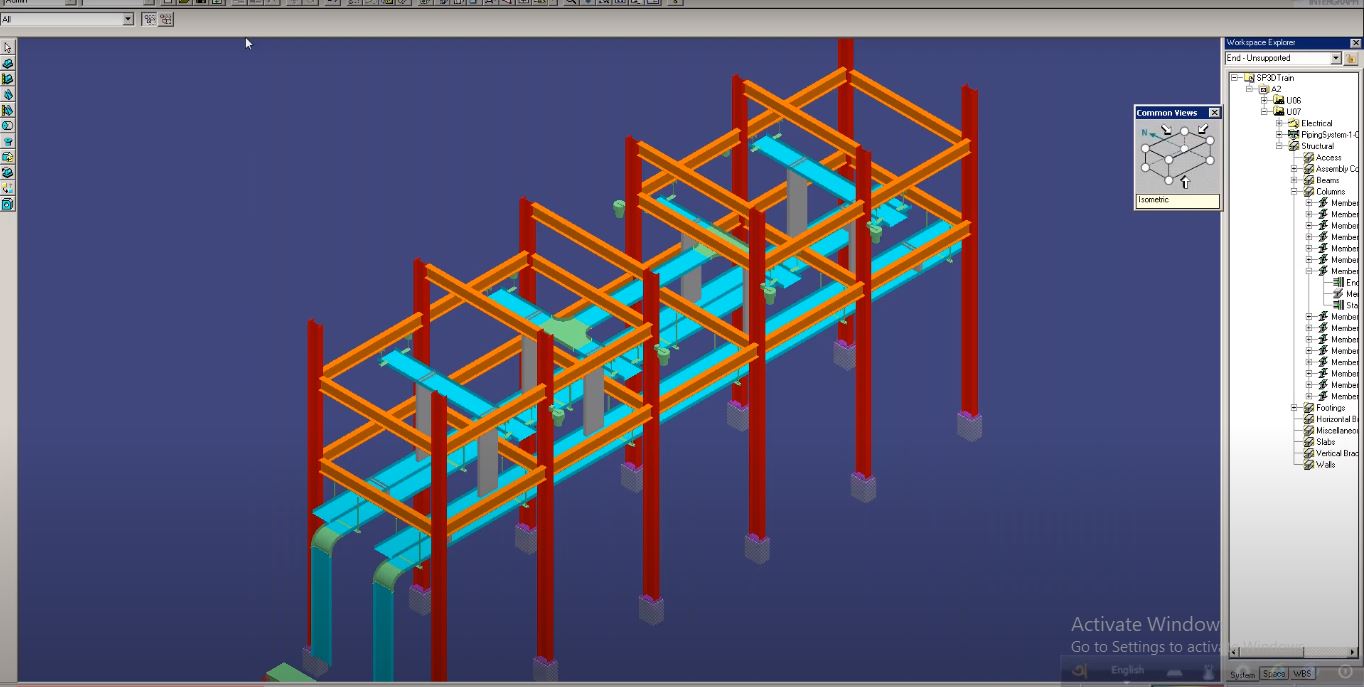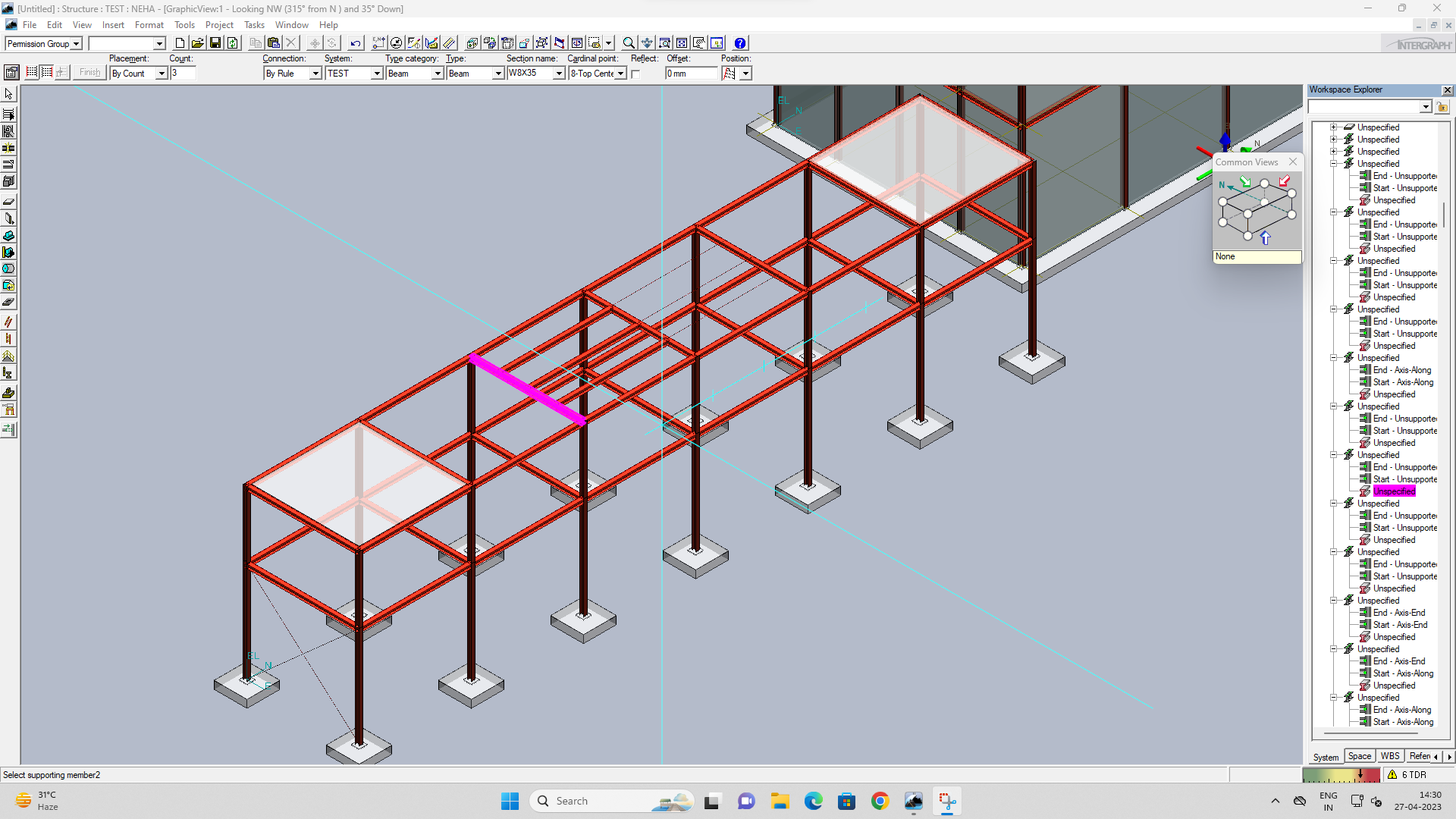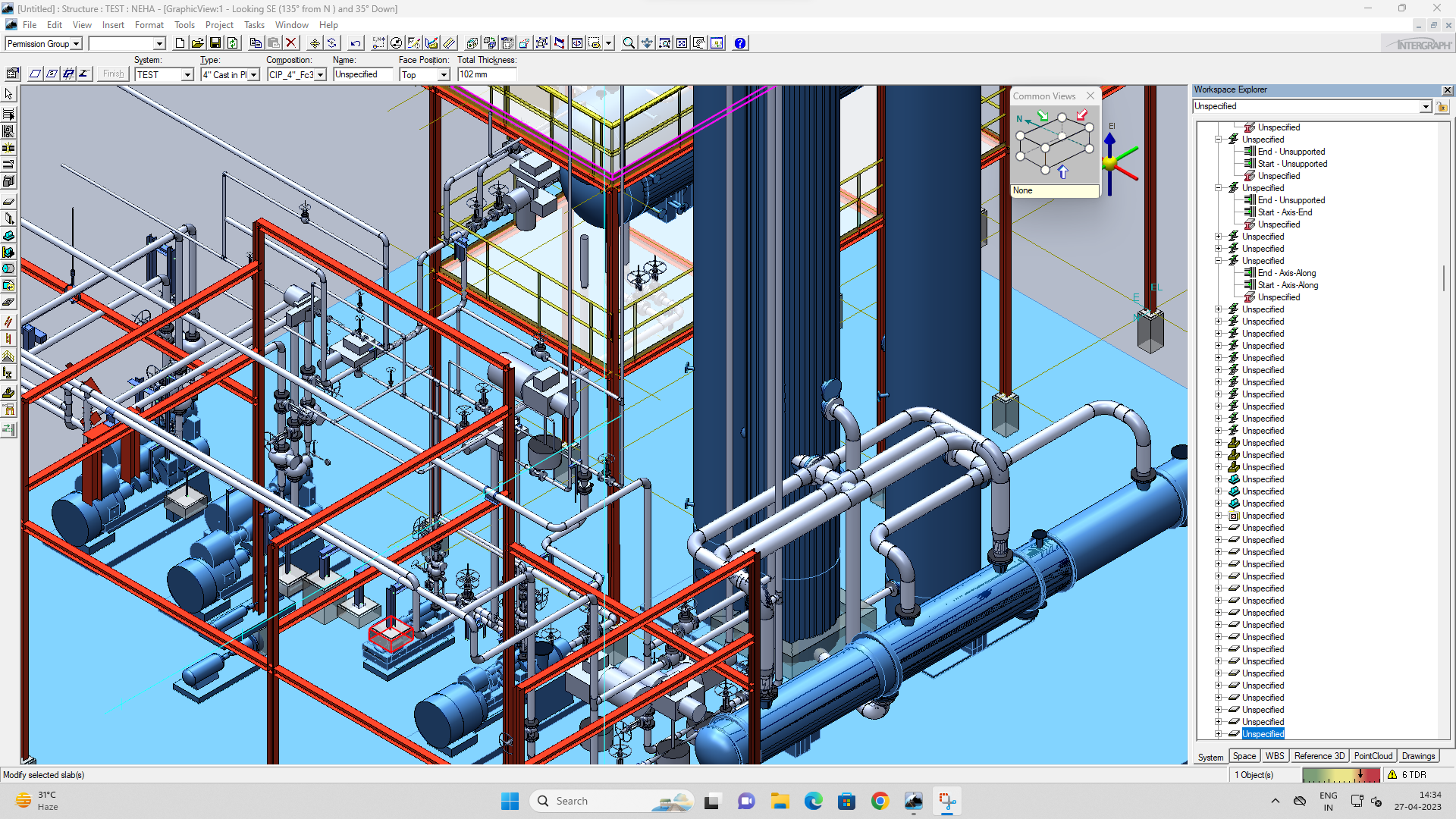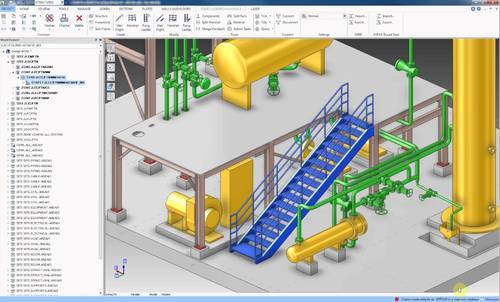Smart plant 3D - sp3d
Learn SP3D from industry experts and gain real-world project experience.
SP3D training course
Eligibility Criteria – Fresher’s/ ITI holders/ Diploma/ BE/ Any Draftsman
Discipline – Piping, Mechanical, Chemical, Production, Civil, Structural, Electrical and Instrumentation
Course Duration – 30 days
Detailed Syllabus
1. Introduction to SmartPlant 3D:
- Overview of SmartPlant 3D and its capabilities
- Understanding the benefits of using SmartPlant 3D in process plant design
- Understanding the SmartPlant 3D data model and its components
2. 3D modeling:
- Overview of the 3D modeling techniques used in SmartPlant 3D
- Understanding the different types of models, including wireframe, surface, and solid models
- Introduction to creating and manipulating 3D models in SmartPlant 3D
3. Equipment modeling:
- Creating equipment models in SmartPlant 3D, including tanks, vessels, pumps, and compressors
- Understanding equipment modeling workflows and best practices
- Creating equipment data and associating it with the 3D model
4. Piping modeling: (for Piping discipline)
- Creating piping models in SmartPlant 3D, including pipe routing, pipe support, and pipe specifications
- Understanding piping modeling workflows and best practices
- Creating piping data and associating it with the 3D model
5. Structural modeling: (for Civil & Structural discipline)
- Creating structural models in SmartPlant 3D, including steelwork, concrete, and foundations
- Understanding structural modeling workflows and best practices
- Creating structural data and associating it with the 3D model
6. Electrical modeling: (for Electrical discipline)
- Creating electrical models in SmartPlant 3D, including cable routing, tray routing, and equipment modeling
- Understanding electrical modeling workflows and best practices
- Creating electrical data and associating it with the 3D model
7. Instrumentation modeling: (for Instrumentation discipline)
- Creating instrumentation models in SmartPlant 3D, including instrument specifications, instrument loops, and cable routing
- Understanding instrumentation modeling workflows and best practices
- Creating instrumentation data and associating it with the 3D model
8. Drafting:
- Creating 2D drawings and documents from 3D models in SmartPlant 3D, including isometrics, GA drawings, and P&IDs
- Understanding drafting workflows and best practices
- Customizing the drafting environment to suit specific user requirements
9. Clash detection:
- Using SmartPlant 3D to detect and resolve clashes between different elements of the plant design
- Understanding the different types of clashes and how they can be resolved
- Creating clash reports and using them to communicate design issues to stakeholders.




What is SP3D software?
SP3D (SmartPlant 3D) is a comprehensive 3D modeling software tool used in the engineering and construction industries for designing and modeling plants, factories, and other large-scale structures. Developed by Intergraph (now part of Hexagon AB), SP3D is a highly integrated software solution that combines 3D modeling, visualization, and information management capabilities into a single application.
SP3D allows engineers and designers to create highly detailed and accurate models of complex structures such as power plants, refineries, chemical plants, and offshore platforms. It supports a range of disciplines including piping, equipment, structural, electrical, and instrumentation and allows for collaboration among multiple teams working on a single project.
SP3D provides a range of features and tools that enable users to create and modify models quickly and easily. It also includes advanced capabilities for analysis and simulation, documentation and reporting, and project collaboration and management.
Overall, SP3D is a powerful tool that helps streamline the engineering and construction process by enabling faster, more accurate design and modeling, improved collaboration among teams, and better project management.
What are the applications of SP3D software?
SP3D (SmartPlant 3D) is a versatile software tool with a wide range of applications in the engineering and construction industries. Some of the main applications of SP3D include:
- Plant design: SP3D is widely used for designing and modeling large-scale structures such as power plants, refineries, chemical plants, and offshore platforms. It enables engineers and designers to create highly detailed and accurate models of these structures, allowing for better planning, analysis, and optimization.
- Piping design: SP3D includes powerful tools for creating and modeling piping systems, allowing designers to route pipes and add components with ease. It also includes advanced capabilities for analyzing and optimizing piping systems, helping to ensure that they are safe, efficient, and cost-effective.
- Equipment design: SP3D enables designers to create and model equipment such as pumps, compressors, and heat exchangers, allowing for accurate sizing and placement. It also supports the integration of instrumentation and control systems, helping to ensure that equipment operates effectively and safely.
- Structural design: SP3D includes tools for modeling and analyzing structural elements such as steel beams, concrete columns, and foundations. This enables designers to ensure that structures are safe and can withstand the stresses of the environment in which they are located.
- Electrical and instrumentation design: SP3D includes tools for modeling and integrating electrical and instrumentation systems into overall plant designs. This allows for more efficient and effective design and installation of these systems.
- Project management: SP3D includes tools for project management, collaboration, and documentation, helping to ensure that projects are completed on time, within budget, and to the required quality standards.
Overall, SP3D is a powerful software tool that has a wide range of applications in the engineering and construction industries.
Role of SP3D designer
The role of an SP3D (SmartPlant 3D) designer is to use the software to create and modify detailed 3D models of large-scale structures such as power plants, refineries, chemical plants, and offshore platforms. Some of the key responsibilities of an SP3D designer may include:
- Model creation: An SP3D designer is responsible for creating and modifying 3D models using the software. This includes creating models for piping systems, equipment, structural elements, electrical systems, and instrumentation.
- Design optimization: An SP3D designer is responsible for optimizing the design of structures to ensure that they meet safety, environmental, and cost requirements. This involves analyzing and optimizing design elements such as piping systems, equipment, and structural elements.
- Collaboration: An SP3D designer works closely with other members of the design team, including engineers, project managers, and other designers. Collaboration involves sharing information, resolving design issues, and ensuring that the overall project goals are met.
- Documentation: An SP3D designer is responsible for creating and maintaining accurate and up-to-date documentation related to the design of structures. This includes creating detailed reports, isometric drawings, and other documentation required for project delivery.
- Quality control: An SP3D designer is responsible for ensuring that the quality of the design meets the required standards. This involves conducting regular checks on the design and making necessary modifications to ensure that the final product is of high quality.
Overall, the role of an SP3D designer is critical in ensuring the successful completion of large-scale engineering and construction projects. They play a key role in the design process, collaborating with other team members to optimize designs, and ensuring that the final product is of the highest quality.
Company names who recruit SP3D designers
There are many companies that hire SP3D (SmartPlant 3D) designers for their process plant design projects. Here are some of the well-known companies that frequently hire PDMS designers:
- Aker Solutions
- WorleyParsons
- TechnipFMC
- KBR, Inc.
- Jacobs Engineering Group Inc.
- SNC-Lavalin
- Wood Group
- Fluor Corporation
- Petrofac
- McDermott International, Inc.
These companies operate in a variety of industries, including oil and gas, chemical, pharmaceuticals, and power generation. However, there are many other companies that may also hire SP3D designers, depending on the specific project requirements and industry needs.
Some examples of Indian companies
There are several Indian companies that recruit SP3D (SmartPlant 3D) designers for various engineering and construction projects. Some of these companies include:
- Larsen & Toubro
- Reliance Industries Limited
- Tata Projects Limited
- Indian Oil Corporation Limited
- Hindustan Petroleum Corporation Limited
- Bharat Petroleum Corporation Limited
- Oil and Natural Gas Corporation Limited
- Essar Group
- Adani Group
- GAIL (India) Limited
These are just a few examples of Indian companies that may hire SP3D designers. The demand for SP3D designers is typically high in India’s engineering and construction industries, particularly for projects involving large-scale structures such as power plants, refineries, and chemical plants.
Future prospects of SP3D
The future prospects of SP3D (SmartPlant 3D) look promising, as it is a widely used software tool in the engineering and construction industries. Here are some reasons why:
- Growing demand for infrastructure: The demand for large-scale infrastructure projects such as power plants, refineries, and chemical plants is expected to grow in the coming years, particularly in emerging markets. This is expected to drive the demand for software tools like SP3D that enable efficient and accurate design and modeling of such structures.
- Advancements in technology: As technology continues to advance, new features and capabilities are likely to be added to SP3D, making it even more powerful and versatile. For example, the integration of SP3D with cloud-based platforms and advanced analytics tools could lead to more efficient design and construction processes.
- Increasing adoption of BIM: Building Information Modeling (BIM) is becoming increasingly popular in the construction industry, and SP3D is well-positioned to be an important tool in the BIM workflow. This is because SP3D is capable of integrating with other BIM tools and software platforms, allowing for seamless collaboration across different design disciplines.
- Need for cost and time savings: The need to reduce project costs and shorten project timelines is expected to drive the adoption of software tools like SP3D that enable efficient design and construction processes. SP3D’s ability to automate many aspects of the design process and enable more effective collaboration is likely to make it an attractive option for engineering and construction firms looking to improve efficiency.
Overall, the future prospects of SP3D look bright, with growing demand for large-scale infrastructure projects, advancements in technology, increasing adoption of BIM, and the need for cost and time savings expected to drive its continued use and development.
